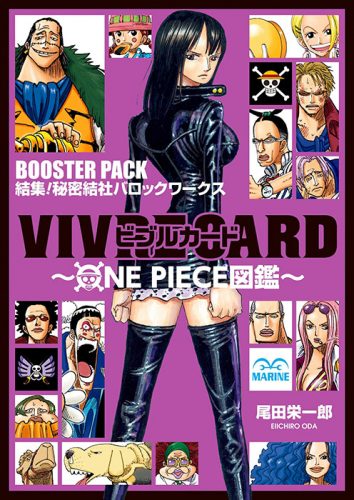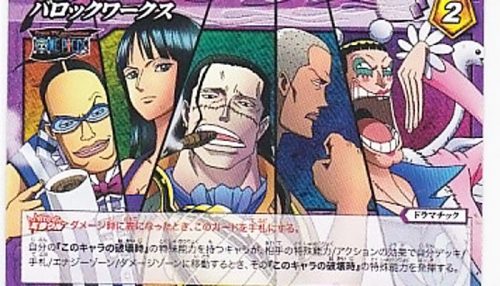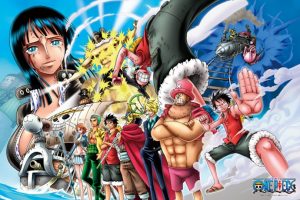
Last time, we covered how the East Blue Saga of One Piece builds up a lot of the core elements that make up the franchise. However, as any avid One Piece fan knows, there’s a lot more going on in One Piece than just Luffy getting moral justification for punching out bad guys. Let’s look at how its following story arc, the Baroque Works saga, builds upon the ideas set up by East Blue!
Disney Shounen Battle
The biggest change we see over the course of Baroque Works isn’t actually the style of story-telling, but the setting and art direction. While Luffy and company were frequently jumping from island to island in the East Blue, there wasn’t a lot of visual variety. They were basically all the same take on the same rundown, quiet village town. The one exception was the Baratie, which was a large ship rather than its own location.
This changes during Baroque Works. From here on, every island gets its own unique visual style that plays into the overall theme of each story arc. Drum Island is a winter wonderland because it was once a nation of doctors, and it makes sense to have a lot of doctors congregate where people might need more frequent treatment. Little Garden is an otherwise unremarkable, isolated jungle island, so it makes sense that 2 giants would go to such an out of the way location to duke it out for 100 years. The history and story of these islands is now just as important to narrative as the characters that inhabit them.
Yet the one we really want to draw your attention to is Alabasta, which is really the prototype for the approach One Piece would take to its world-building. It’s not merely just a desert island, but the culture of Alabasta is very heavily influenced by the Middle East. Not only that, but its central conflict (the lack of drinkable water) is an issue that is deeply rooted in the history of the region. The story’s resolution reflects real world events in that it is Sir Crocodile, an outside force, manipulating the situation to his advantage and was empowered with the backing of the world government. Oda would go on to repeat appropriating other cultures with the Spanish-influenced Dressarosa tackling Spain’s troubled history with dictatorships, Fishman Island taking visual cues from Harlem and touching on racial subjugation, and the Viennese-styled Water 7 dealing with the city actually sinking and the government telling people just to get used to it, to just name a few.
This is very similar to the Disney approach of adapting famous stories from other cultures to give them an edge of exoticism, but with one crucial difference. Disney movies tend to remove a lot of the baggage that comes with their history, like, say, they famously did with Pocahontas, and try to sanitize them for modern audiences with modern sensibilities. One Piece uses people’s interest in these unfamiliar regions to make them more interested in their actual history, and reflects them with real world problems. This helps us as a viewer/reader to view very complicated issues in a much simpler light.
Building Up the Narrative
You remember how that Shichibukai managed to beat Zoro with just a toy dagger? Well, Sir Crocodile is also a Shichibukai. That simple knowledge really drives home just how much greater the threat is in the Grand Line versus the East Blue. Not only that, but under Sir Crocodile is a group of other ridiculously strong men and women that are helpfully ranked from 1 to 10. This extents One Piece’s “Title” system and solidifies that titles are shorthand for “Very strong individual”. They’ll have to work through titles to get to the top-most titled of them all!
This is also where the lines start to get more and more morally blurred. In East Blue, people who were supposed to be in positions to help other people turned out to be the bad guys, but generally when they were revealed to be as part of the “bad guy” group, they stayed there. Nami was a bit of an exception, but we had a lot of time built up with her before that twist. In Baroque Works though, Miss Wednesday starts off as a recurring villain but turns out to be Nefertari Vivi, the princess of the nation of Alabasta and is working from within Baroque Works to take down Crocodile. The World Government is a largely evil force, but even though Smoker has been trying to chase down Luffy, he’s also not pleased Luffy’s used as a scapegoat to hide their embarrassment. This growing moral ambiguity culminates with Crocodile’s right-hand woman, Nico Robin, joining the Strawhats under mysterious circumstances.

Final Thoughts
Ultimately, the Baroque Works Saga is really where One Piece starts to resemble what we’ve come to know as the One Piece experience. It’s where the world gets fleshed out and even though it’s still a relatively simple story, the lines are starting to get more and more blurred.
Next time we hope to cover what exactly made Skypeia feel so different! Stay tuned!
Recommended Post
Looking Back on One Piece: East Blue
Recommended Post



